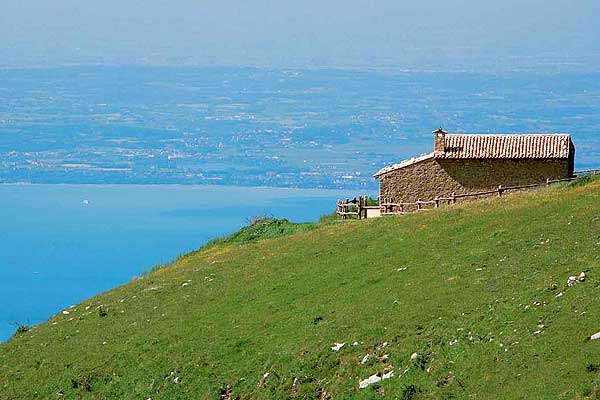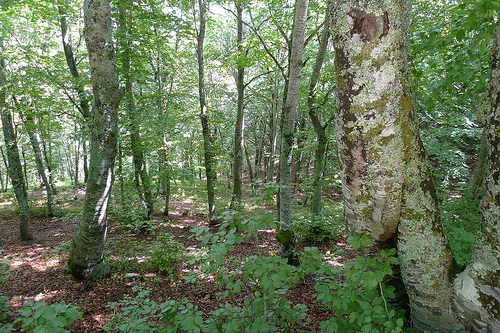
State Forest of Mount Baldo
This post is also available in:
 Italiano (Italian)
Italiano (Italian)
Monte Baldo is the westernmost mountain range of the Venetian Pre-Alps and extends between Veneto and Trentino, bordered to the north by the Loppio valley, to the west by Lake Garda, to the east by Val Lagarina and to the south by the Caprino basin and the morainic amphitheatre of Rivoli.
The name “Monte Baldo” appeared for the first time in a 1163 German map, while the first traces of human presence date back to prehistoric times – as evidenced by the rock engravings on Monte Luppia.
Several defensive works scattered throughout this area are a testament to the human colonization of these lands; small villages with chapels and churches soon appeared, some of which are still very well preserved. The main resource of the populations was sheep and cattle herding, so much so that in ancient times Monte Baldo was known as the “Mountain of the shepherds”.
Over time, livestock breeding – cattle in particular – became just as popular and profitable. Many woods were destroyed to make room for meadows and pastures, and typical service building, huts, and shelters were built almost everywhere.
Monte Baldo also features a remarkable flora. On the shores of the lake there is a strip of land used for the cultivation of vines (Vitis vinifera), and olive trees (Olea europaea).
At 1.968-2.296 ft above sea level, the mountain features the natural woodland vegetation in a state-owned forest, basically consisting of downy oaks (Quercus pubescens) in the dry and sunny areas and of black hornbeams (Ostrya carpinifolia) in the wetter and dryer ones.
These two species are associated with manna ashes (Fraxinus ornus), Turkey oaks (Quercus cerris), Canadian serviceberry trees (Amelanchier canadensis), the hackberry (Celtis australis), and the Judas-trees (Cercis siliquastrum).
In the driest areas and on the steep slopes, there are extensive patches of evergreen oaks (Quercus ilex), often associated with the green olive trees (Phillyrea latifolia), and Italian buckthorns (Rhamnus alaternus).
Where the soil is moderately acidic, there are some chestnut trees (Castanea sativa).
The upper belt is characterized by the beech wood combined with a shrub layer with hazelnut (Corylus avellana), wayfaring trees (Viburnum lantana), dog roses (Rosa canina), and other species such as Norway spruce and silver firs (Picea abies and Abies alba), sycamore maples (Acer pseudoplatanus), the rowans (Sorbus aucuparia), common whitebeams (Sorbus aria), and sweet cherry trees (Prunus avium).
Lawns mostly cover the eastern side of the mountain, while there are none on the other side due to the high sloping ground; on the other hand, the herbaceous layer is rich in numerous species including many orchids, liverwort (Hepatica nobilis), bastard balm (Melittis melissophyllum), and Alpine cyclamen (Cyclamen purpurascens).
On the higher areas of the Baldo Mountain Range, some important endemic species are definitely worth mentioning, including rhizomatous herbs (Callianthemum kerneranum), sedges (Carex baldensis), Mount Baldo bellflowers (Campanula petraea), and the Mount Baldo anemones (Anemone baldensis).
Small crawling bushes of dwarf willows (Salix herbacea, Salix retusa, Salix reticulata), and a sparse herbaceous vegetation with sedge (Carex firma) can be observed on the crests and in the nival valleys, where the snow of the winter remains for many months. There is also sesleria minor (Sesleria sphaerocephala), silvery crane’s bill (Geranium argenteum), and moss campion (Silene acaulis).
This post is also available in:
 Italiano (Italian)
Italiano (Italian)
Contatti
Verona(VR)
045 913620 . Comunità Montana del Monte Baldo - tel. +39 045 72
foreste.verona@venetoagricoltura.org


